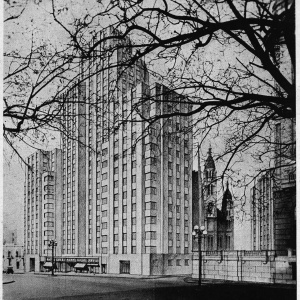Sánchez, Lagos and de la Torre: architects and real estate developers leading the way of zoning codes interpretation
DOI:
https://doi.org/10.35305/23626097v5i9.184Keywords:
rent, modernity, Beaux Arts, apartments for rent buildings, skyscrapersAbstract
This article proposes an interpretation that refutes the simplification or logical heritage approach which deals with the path that goes from the savoir faire of the Beaux Arts architects to the subsequent tuition of the International Style. The buildings that Corina Kavanagh or her brother Diego –together with her partner Pablo Cárdenas Jr- commissioned to Sánchez, Lagos y de la Torre between 1934 and 1936 merged the program of luxury apartments for rent with modern architecture. This not frequent feature -which should not be taken for grantedprovides the case studies. Among them, the Kavanagh Building embodied the uttermost example of a developers’ investment modality which characterized a brief cycle that continued until 1936. Three of the cases addressed –which were commissioned as apartment buildings for rent- introduced solutions based on a pragmatic and innovative decision making as regards city corner spots that entailed important consequences for composition, visual perception and the interior layout of buildings.
Downloads
Metrics

Downloads
Published
How to Cite
Issue
Section
License
Open access policy
A&P Continuidad is a non-profit and open access publication. According to Mexico Declaration on Cultural Policies, the journal distribution is submitted to Creative Commons Attribution-Noncommercial-ShareAlike 4.0 International Public License (CC BY-NC-SA). “Neither the commercial use of the original work nor that of the possible derivative works are allowed. The distribution of derivative works should be submitted to the license regulating the original work. This license is not free.”
A&P Continuidad authorizes the partial or full reproduction of texts and graphs provided that the source is cited. Authors are exclusively responsible for the criteria expressed in the articles which do not necessarily reflect the opinion of the Editorial Committee or that of the Direction Board. The copyright of the published articles pertains to their authors or publishers.
Transfer of rights
The acceptance of an article to be published implies the author’s transfer of rights to the journal. Authors continue to have the right to use the material in future books or publications, approve or veto the republication of their works as well as the rights related to patents or other rights. Transfer of rights form may be downloaded here.























 This OJS site and its metadata are under a
This OJS site and its metadata are under a 

